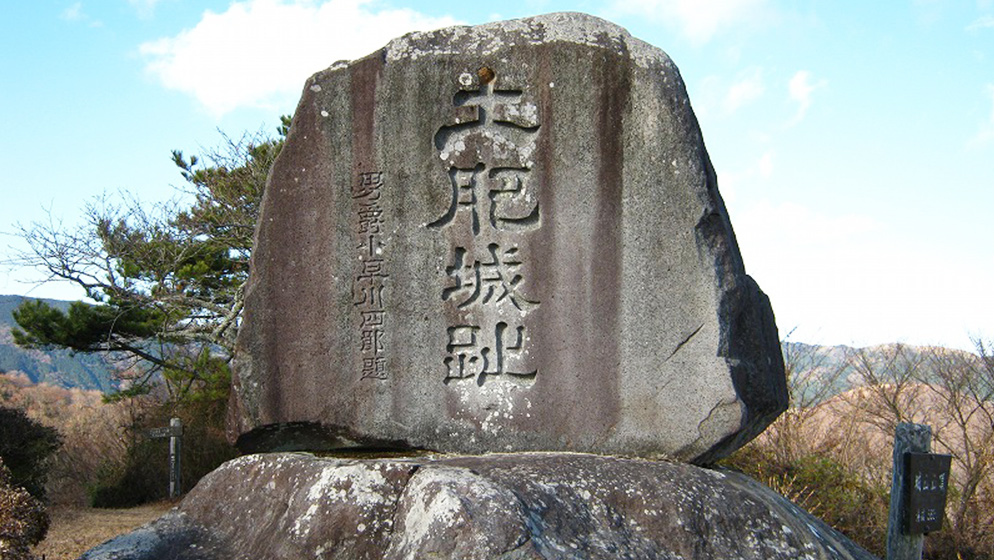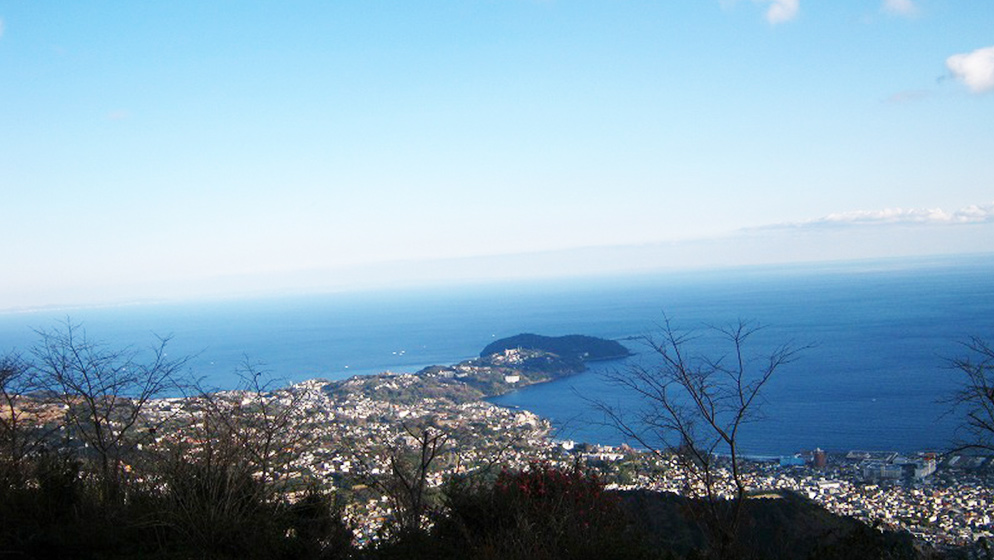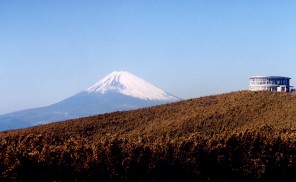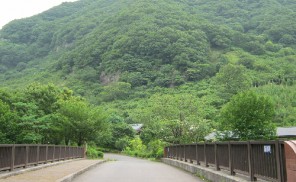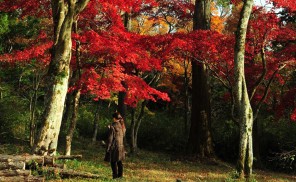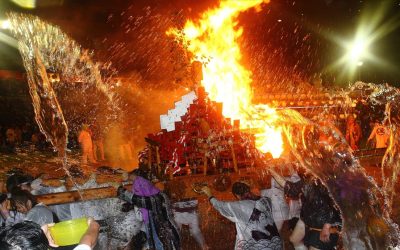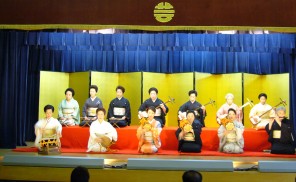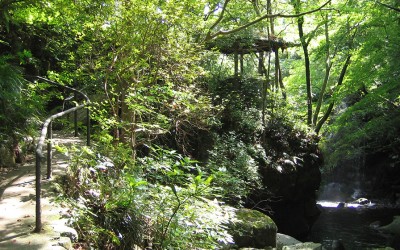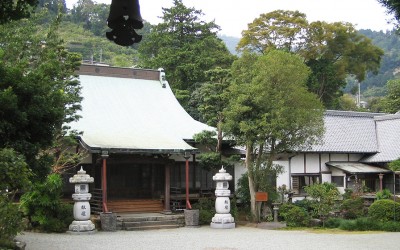The Shiroyama Hiking Course
[Walking time: about 2 hours and 20 minutes (reverse course: 2 hours and 30 minutes). Suited for average hikers.]
This is a course for tracing historic relics and locations, dating back to the days when Yugawara was called Doi-go, while also admiring the splendid panoramic scenery. You will feel Yugawara’s close ties with Minamoto Yoritomo as you journey to Joganji Temple, the Doi castle ruins atop Mt. Shiroyama, Shitodo Cave, and other storied landmarks.
Mt. Shiroyama, one of Kanagawa’s new “Hakkei” (“eight picturesque sites”), is 562 meters above sea level. It bears the castle ruins, marked by a large inscribed stone monument (see photo above), of Sanehira Jiro Doi, a powerful clan leader in the Yugawara area long ago. Known as a particularly scenic place in Yugawara, it has a spectacular mountaintop view of Sagami Bay, the Manazuru, Boso, and Izu Peninsulas, and Oshima and Hatsushima islands. There is also a resthouse at the top, and a grassy meadow that is an ideal spot to break for lunch with a picnic.
To get there, take the bus for Moto-Hakone via Daikanzan from Yugawara Station, and get off at Shitodo no Iwaya Bus Stop. The ride will take about 35 minutes.
Near the bus stop is its namesake, Shitodo no Iwaya, a historic cave where Yoritomo and his followers are said to have hidden about 850 years ago in 1180, after they lost the Battle of Ishibashiyama. The cave is five meters in height, about 13 meters in width, and 11 meters in depth, with 61 stone images and pagodas resting inside.
Also near the bus stop is a large observatory where a resthouse used to stand, with a panoramic view of Mt. Kurakake, Jukkoku-toge Pass, the Iwatoyama mountain range, and Yugawara Onsen just below.
On the descent from the mountain is “Sotoshu Mannenzan Joganji,” more commonly known as Joganji Temple, the family temple of the powerful Doi clan headed by Sanehira. Within its precincts, the clan’s gravesite and more than 50 stone pagodas (designated as important cultural property of the prefecture) are lined up.
In addition, you can see Shichikido, the hall which houses the wooden figures of seven samurai on horseback, who played an active part in the revival of the Minamoto family: Minamoto Yoritomo, Sanehira Jiro Doi, Morinaga Tokuro Adachi, Munetoo Saburo Tsuchiya, Yoshizane Shiro Okazaki, Nobutsuna Kaja Tashiro, and Tadauji Jiro Shinkai.
There is also a great juniper tree at Joganji Temple. Designated as a national natural monument and one of three “power spots” in Yugawara, it is estimated to be over 800 years old and said to have been planted by Sanehira himself.
After finishing touring Joganji Temple, about a 5 minute downhill walk will take you back to Yugawara Station.

